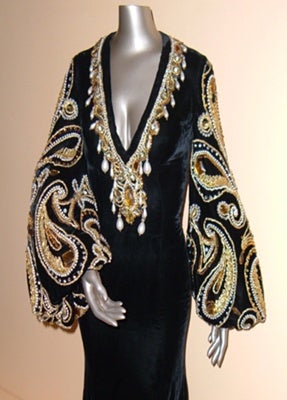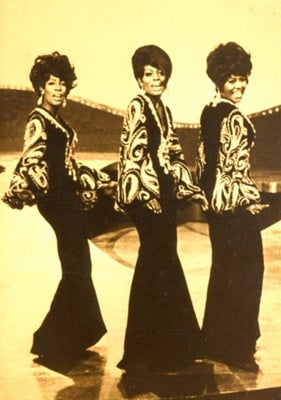They wore a symphony: Supremes’ gowns star in Philly museum display
“Tell your friends — especially the guys — it’s not about the gowns,” said Mary Wilson. “It really is bigger than the gowns.”
Beaded. Feathered. Satin. Lamé. Plunging. Plumed. Flared. Fringed. Sequined. Gold. Caped. Billowy. Psychedelic.
A trove of glamour had been in boxes stacked inside the garage of Wilson, the former and longest-lasting Supreme, until the Rock and Roll Hall of Fame asked to used them as the centerpiece of an exhibition about the Motown girl-group that dominated the charts in the 1960s.
In January the dresses, many in matching sets of three, will be on display at the African-American Museum in Philadelphia. For many who watched the Supremes on television during their heyday (and countless drag queens since) the gowns are the indelible visualization of “Stop in the Name of Love,” “Where Did Our Love Go,” and “You Keep Me Hanging On.”
“It was not only about music, it was about fashion. It was about choreography, it was about style,” said Jerry “The Geator” Blavat, a popular oldies DJ who hosted the TV dance show, “The Discophonic Scene,” in the 1960s.
“I danced on the podium with the kids, so I looked like a kid. I felt like a kid,” said Blavat. “Barry [Gordy, founder of Motown Records] said, ‘That’s how we want to portray with the Supremes. These are young kids, just like your audience, that dressed magnificently.'”
The Supremes provided a popular soundtrack to the turbulent ’60s, when the civil rights struggle reached its apex, and the Vietnam War was building. (in the late 1980s, the Vietnam War television drama “China Beach” used the Supremes’ “Reflections” as its theme song.)
The classy, elegant look of the Supremes elevated the group during a crucial time for African-Americans.
“Around the world, we helped to show the faces of black people. We helped to show the faces of black women,” said Wilson. “We were at that point where Detroit, civil rights, everything opened up. I mean, the civil rights bill passed in ’65. We became divas and citizens all at the same time.”
Some of the gowns had been displayed in a show that traveled England. This exhibition (January through June, 2013) has been curated specifically for the African-American Museum in Philadelphia.
WHYY is your source for fact-based, in-depth journalism and information. As a nonprofit organization, we rely on financial support from readers like you. Please give today.









